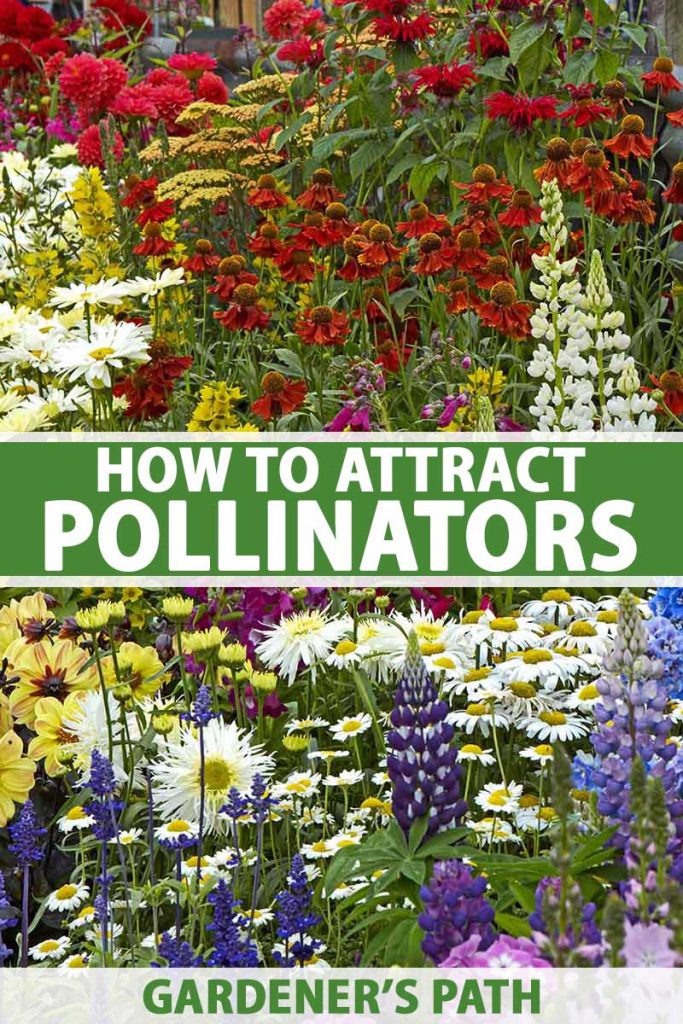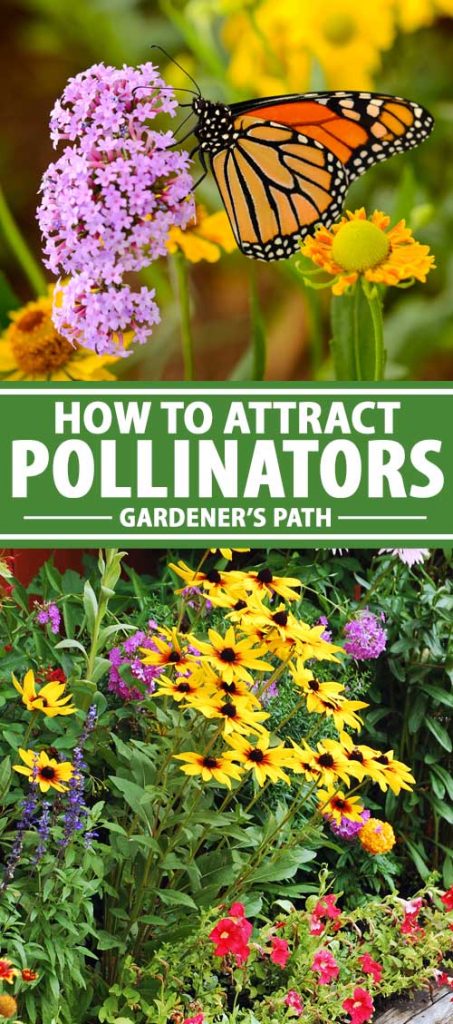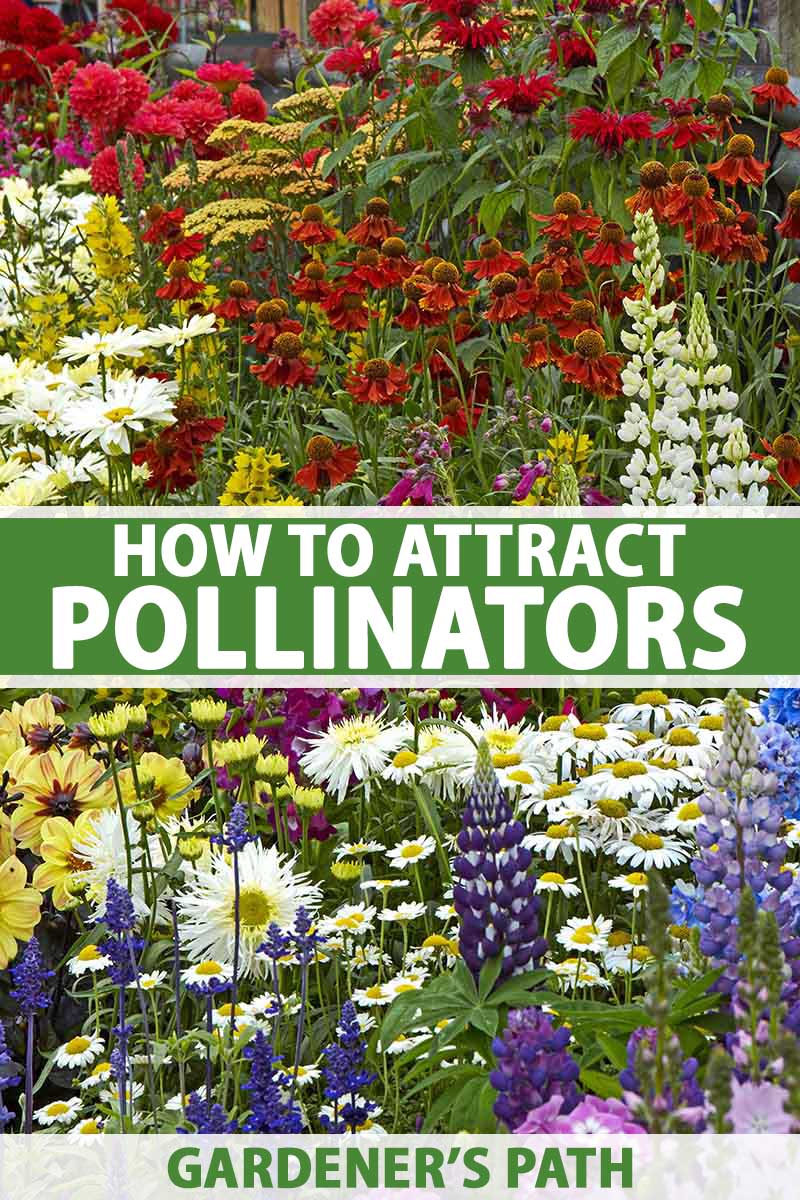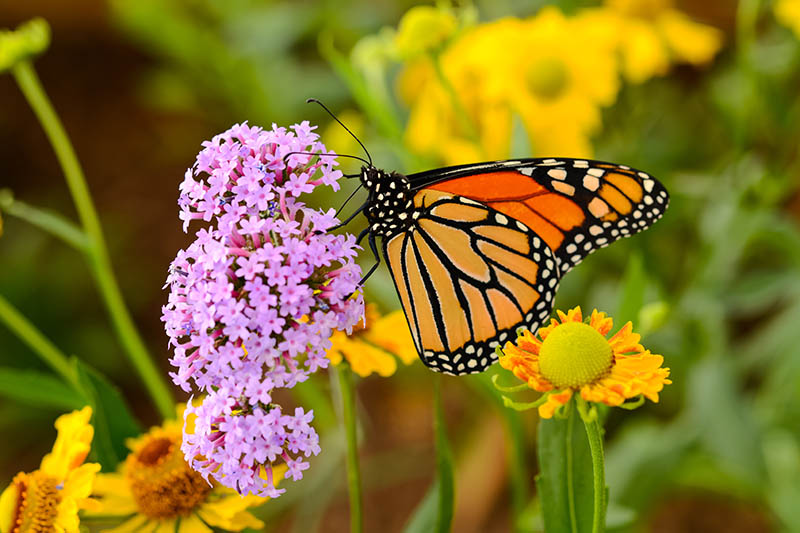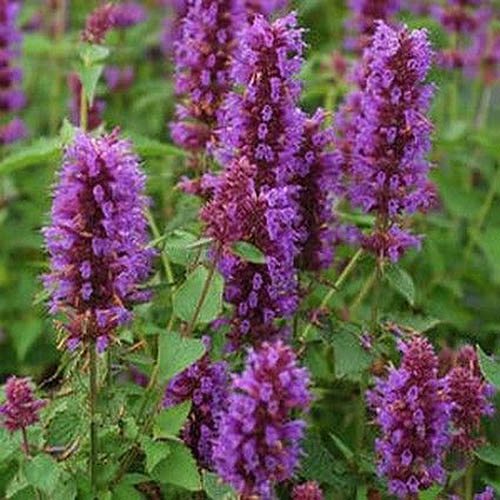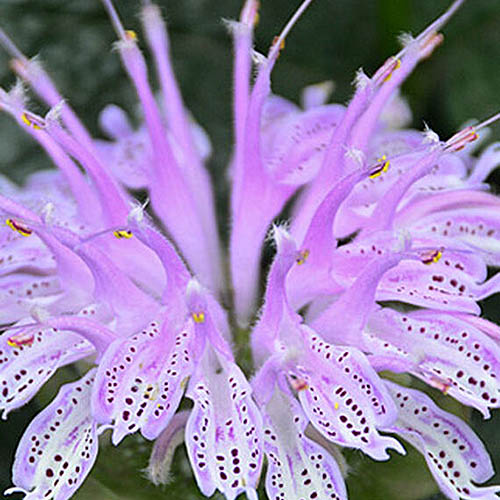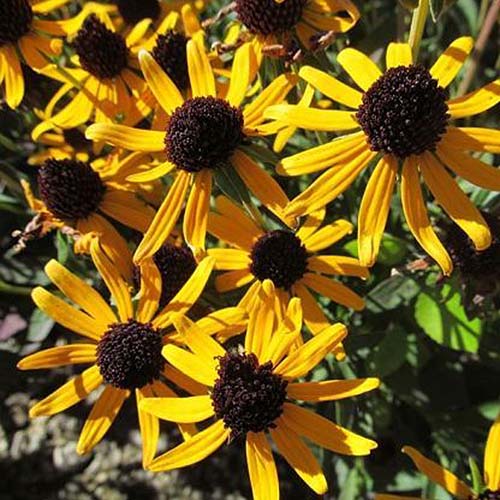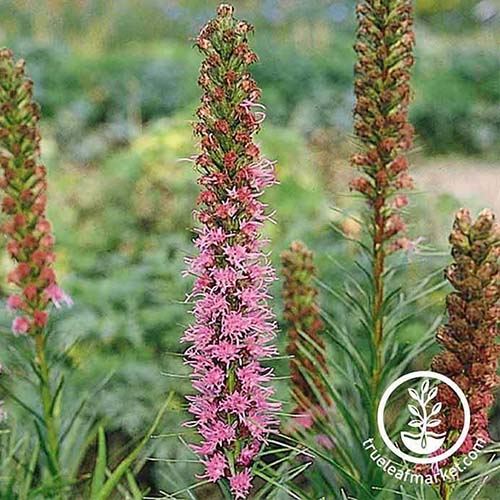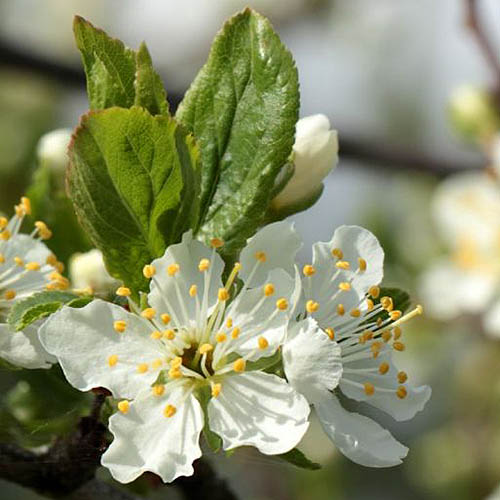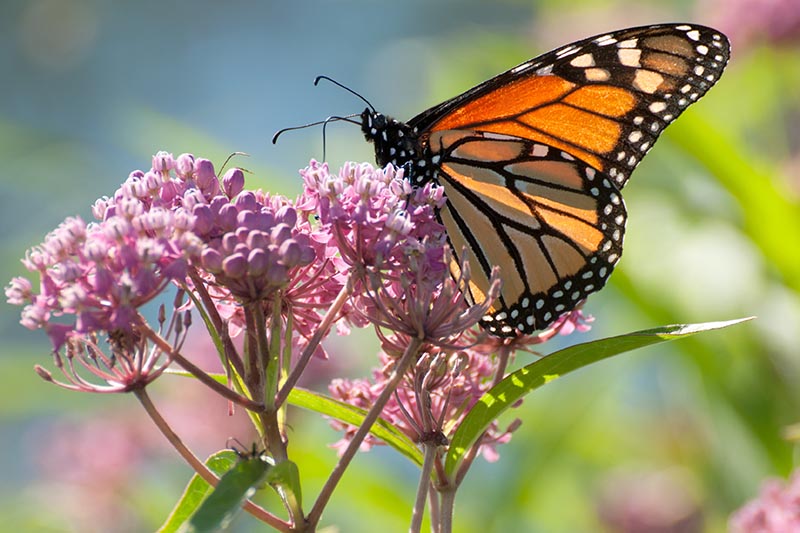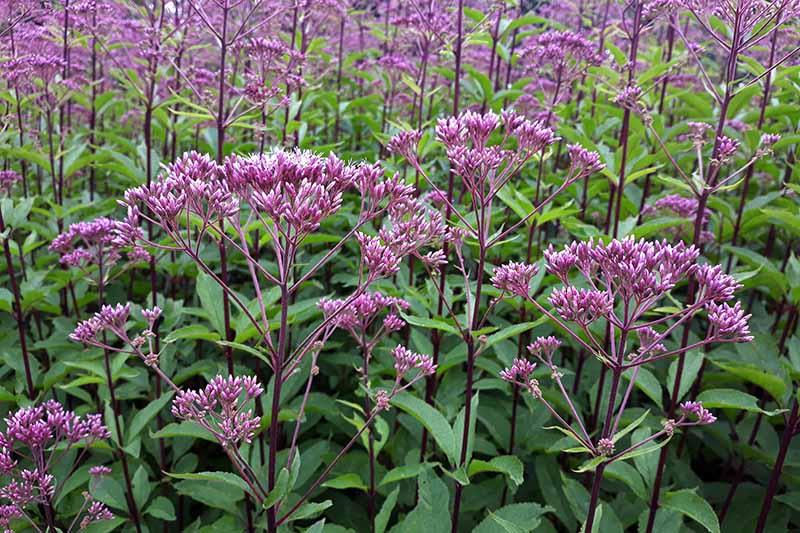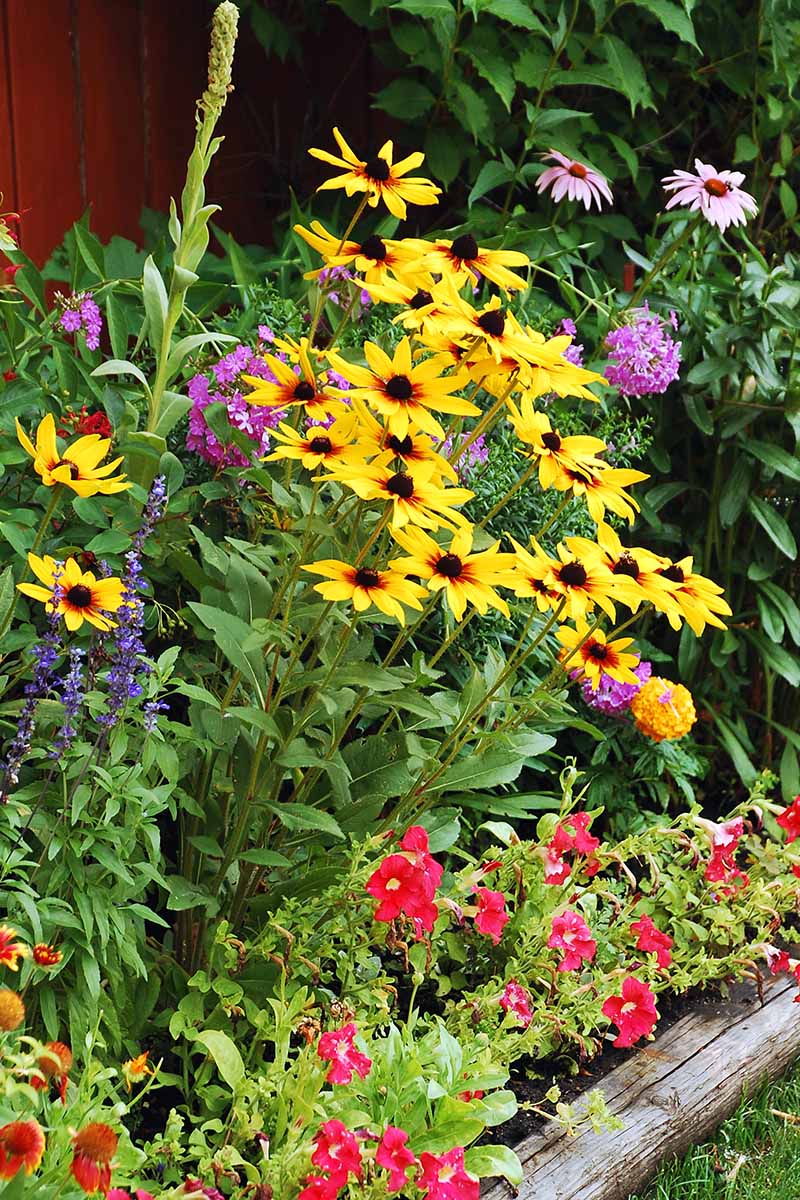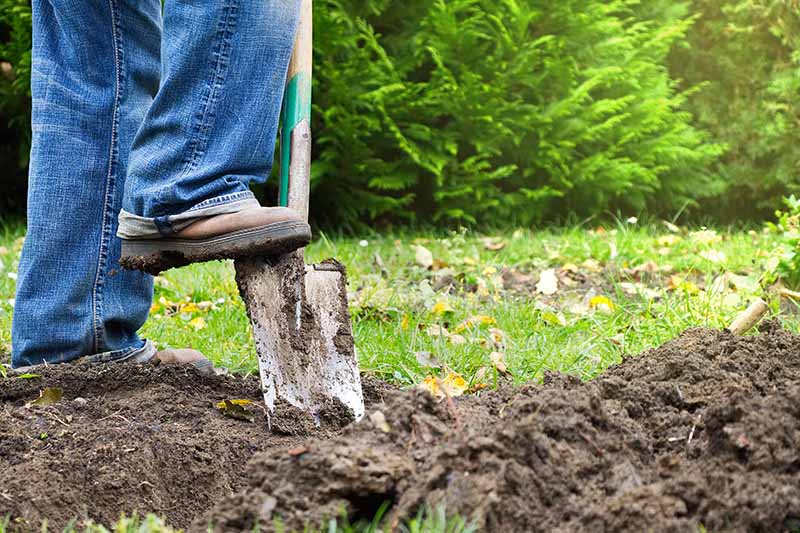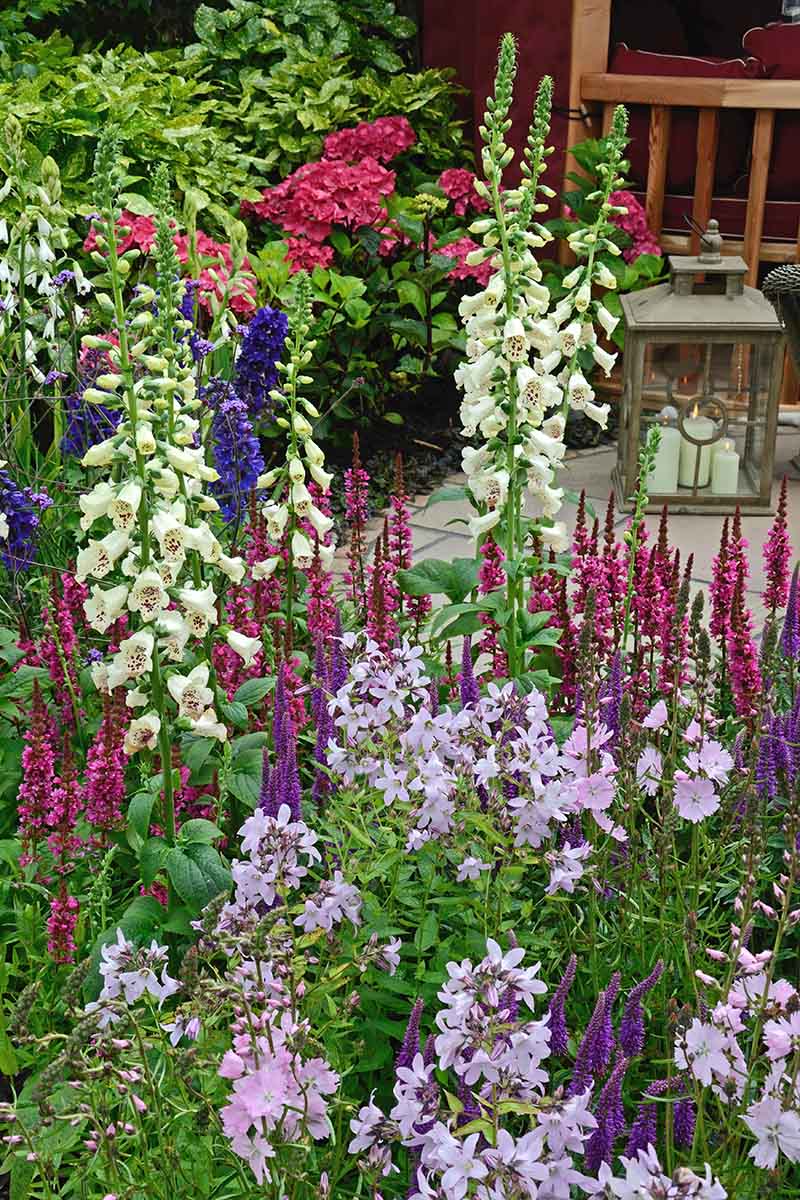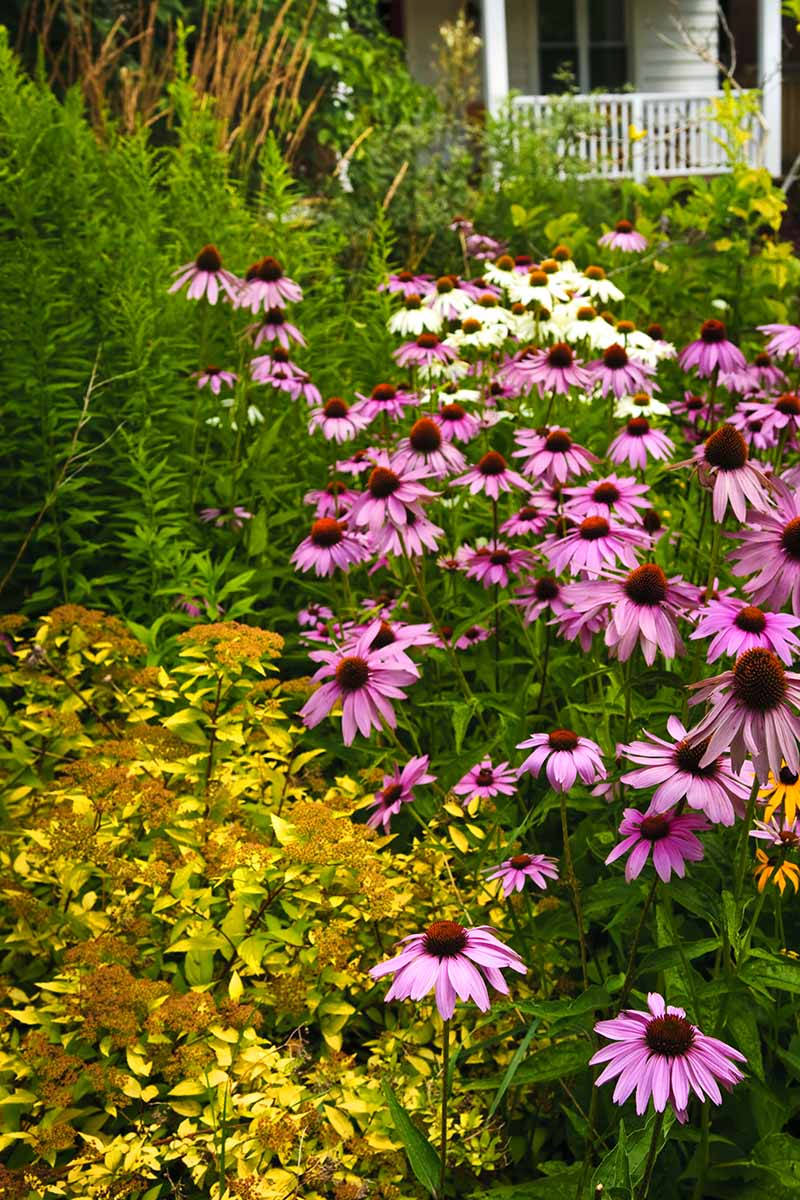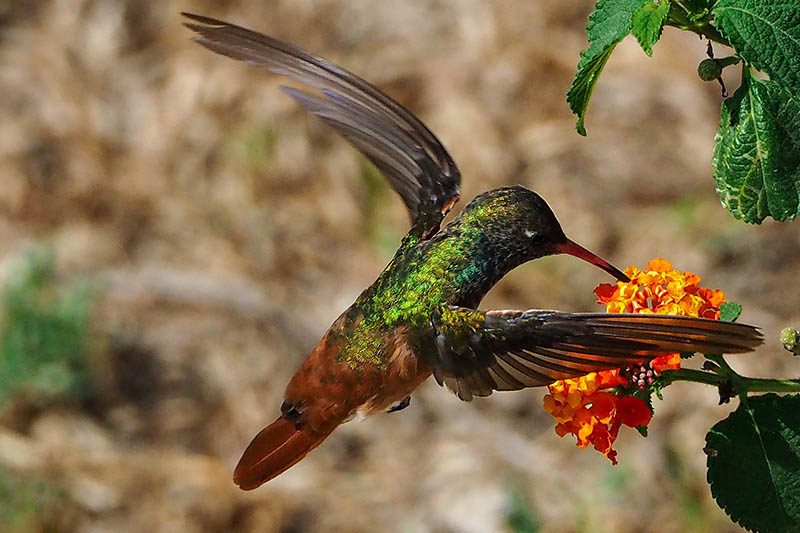While both native and non-native fragrant flowers may be a feast for the human senses, only plants endemic to a region supply viable habitat for the pollinators that evolved with them. Sadly, these native varieties are dwindling, as meadows and woodlands succumb to suburban sprawl. We link to vendors to help you find relevant products. If you buy from one of our links, we may earn a commission. Instant gardens appear just in time for open house, usually consisting of what I call “builder grade” non-natives. They may look pretty, but they don’t make the grade when it comes to the environment. Short of inhibiting erosion and supporting the occasional bird nest, they earn a big zero when it comes to attracting pollinators. Ready to make your garden a haven for pollinating insects? Attracting them to your yard can result in higher yields from your fruit trees and the vegetable garden, too. Here’s what’s to come in this article:
Making Pollinators a Priority
According to the Xerces Society, a nonprofit organization dedicated to the conservation of invertebrate populations, “The United States alone grows more than 100 crops that either need or benefit from pollinators, and the economic value of these native pollinators is estimated at $3 billion per year in the US.” Home gardeners can make a difference, one backyard at a time.
I’ve had good luck with the following nectar-rich species. They grow with gusto in most of the US. Add just one to your yard, and you’ll be on the radar of pollinators buzzing around looking for familiar food and shelter. Here are some of my favorites:
Anise Hyssop
‘Blue Boa’ Anise Hyssop Learn more about how to grow anise hyssop in this guide. A. x ‘Blue Boa’ is a good option that’s available from Nature Hills Nursery, and it’s perfect for Zones 5 to 9.
Bee Balm
Bee balm (Monarda spp.) is another favorite. I find the tubular blossoms of my red variety appeal to hummingbirds. It’s a great host for bees, butterflies, moths, and wasps.
‘Leading Lady Lilac’ Bee Balm Check out the complete guide to growing bee balm here. M. didyma ‘Leading Lady Lilac’ is available from Burpee, and grows well in Zones 4 to 9.
Black-Eyed Susan
Another classic when it comes to growing for pollinators is black-eyed Susan (Rudbeckia spp.). Beloved by butterflies, its cheerful blossoms also attract bees and moths.
‘Deamii’ Black-Eyed Susan Learn how to grow and care for black-eyed Susans in this guide. R. fulgida ‘Deamii’ is available from Nature Hills Nursery, and it is ideal for Zones 4 to 8.
Blazing Star
Blazing star (Liatris spicata) is a striking “line” flower, as floral designers say. Its tall spikes anchor gardens and draw the eye upward.
‘Spiked Gayfeather’ Blazing Star Learn how to plant and grow blazing star with this guide. L. spicata ‘Spiked Gayfeather’ seeds are available from True Leaf Market, in 1-ounce, 4-ounce, and 500-milligram packages. Expect excellent results in Zones 3 to 9.
Chickasaw Plum
Another wonderful way to create wildlife habitat is with native flowering fruit trees, like the Chickasaw plum (Prunus angustifolia).
Chickasaw Plum Attractive to bees, butterflies, moths, and wasps, it also appeals to nesting songbirds in Zones 5 to 9, and it’s available from Nature Hills Nursery.
Purple Coneflower
Purple coneflower (Echinacea purpurea) is another nectar-rich flower I give room to roam in my gardens. It draws bees, butterflies, wasps, and the bright yellow goldfinches I love to watch at the feeder.
Purple Coneflower Check out this guide to learn how to add purple coneflower to your landscape. Seeds are available from True Leaf Market. You may purchase 1-ounce, 4-ounce, 1-pound, or 1-gram packages to sow in Zones 3 to 10. In addition to providing food, native species provide shelter. The monarch butterfly spends a lifetime on or near milkweed (Asclepias spp.), a marvel in Zones 3 to 9. It lays eggs and grows a family, before setting off on its epic migration. In addition, endemic ornamental grasses like bluestem (Andropogon spp.), which grows in Zones 3 to 9, attract butterflies and sustain an array of beneficial insects. A flower I absolutely adore is the gentle giant, joe-pye weed (Eutrochium purpureum). I introduced it to my yard when I needed a tall native for a property border dominated by a black walnut tree.
Did you know that black walnut produces a natural zone of toxicity that inhibits the growth of many vegetative species? You can read more about juglone toxicity in this article. But for now, I want to tell you black walnut plays well with joe-pye, a showy specimen that can top out at a towering six or seven feet. Its frizzled pink blossoms attract butterflies galore in Zones 4 to 9. Three more natives that like room to roam are English lavender (Lavandula angustifolia) for Zones 5 to 9, borage (Borago officinalis) for Zones 2 to 11, and New England aster (Symphyotrichum novae-angliae) for Zones 4 to 8 . Their shades of blue and purple are stunning in mass plantings, and they are beneficial insect magnets.
And finally, native vines like trumpet vine (Campsis radicans) make excellent camouflage not only for fences and walls, but for the wildlife who make their homes inside the intertwined foliage.
100 Plants to Feed the Bees Gardening for Butterflies
Design Your Garden, Your Way
Ready to jump in and get your hands dirty?
Choose a Location
First, look around the yard and choose an existing area of the garden to modify, or a new location. Remove grass, weeds, and unwanted plants, and place useful material on your compost pile. Amend the soil as needed and work it to a depth of about a foot, until it’s loose and crumbly.
Define Your Garden Style
Next, define the style of the plot. Depending on its size and location, you have a number of options. Here are some ideas:
Island
This location may be an “island” that stands alone. In this case, sow the tallest varieties in the center. Allow space for all vegetation to achieve mature dimensions, and work your way out toward the edges of the plot. Use shorter and shorter plants to create a cascade of heights. In this way, all varieties receive light and water, and the appearance is balanced and attractive.
Building Border
Alternatively, you might want to establish a border around the house. Its area must be generous to accommodate all plants at their mature dimensions. Place your tallest varieties at the back and work your way forward with shorter and shorter species.
Freestyle Border
For freestanding borders, such as those along a driveway, determine the dimensions required to accommodate your plants at maturity and space accordingly. Place the tallest ones along an imaginary center line that runs the length of the plot. Work your way outward with shorter and shorter types on both sides of the high center line.
Cottage
If these traditional styles don’t suit your tastes, consider English cottage gardening, in which short and tall varieties mingle at random.
Some ideas are:
Meadow
In addition, you may have an expanse of land that is currently a lawn. Why not churn it up and seed it with native wildflowers?
Wildflower Seed Meadow Mix It’s a great way to reduce yard work and contribute habitat to essential pollinators. A Wildflower Seed Meadow Mix is available from True Leaf Market.
Choose a Color Scheme
Next, you’ll need to get creative with your color scheme. Pick out your favorites and choose a style that’s uniquely yours.
An analogous style that uses colors in a rainbow sequence, like pink, purple, and blue A complementary arrangement that is composed of opposites, like yellow and purple, or orange and blue. An eclectic mix of colors that appeal to you
Once you’ve found a location, defined a garden style, and established a color scheme, you’re ready to select nectar-rich plants with similar soil, light, and moisture requirements to suit your needs.
In addition to vegetation, there are other ways to attract beneficial insects and birds to your yard, like providing comfy places to build homes and access to water. Beetles enjoy finding rocks and rotting wood for burrowing. Spiders love to weave webs in wispy ornamental grasses and ground covers. Bees are the number one pollinator, and bee houses are a great way to invite them to stay. Maya Insect Hotel You might tempt some mason bees to move in with the Maya Insect Hotel, available from Home Depot. And finally, protect insects and birds by using only organic pesticide alternatives on your property.
If You Plant It, They Will Come
I invite you to add a nectar-rich species, dedicate a garden, or commit your whole landscape to the rejuvenation of the pollinator population.
I’m transforming my property, one section at a time. The house came with a yard chock-full of vegetation of questionable value from a wildlife habitat standpoint. While my gardens are becoming established, I am installing bird feeders and bird baths to encourage additional wildlife visitors. I especially enjoy watching hummingbirds. They have a long bill and tongue similar to an butterfly’s proboscis, for sipping nectar from elongated blossoms, like those of the trumpet vine. This bird and plant coevolved, and they are a perfect match. I’m eager for my own trumpets to bloom. I’m reminded of that movie about the baseball diamond, “Field of Dreams” – if you plant it, they will come. I know you’re psyched, so I’ll leave you to get started!
Are you planning beds and borders with pollinators in mind? Let us know who comes to visit your nectar-rich gardens in the comments section below. And if you are looking for more design ideas to transform your garden, check out these guides next:
Design and Construct Gorgeous Spring Planters for Porches and Patios Update Your Landscape: Get Creative with Garden Paths and Walkways Fall Garden Planting Design Guide: Create a Cozy and Inviting Autumn Oasis
© Ask the Experts, LLC. ALL RIGHTS RESERVED. See our TOS for more details. Product photos via Burpee, Nature Hills Nursery, True Leaf Market, and Xerces Society. Uncredited photos: Shutterstock.
